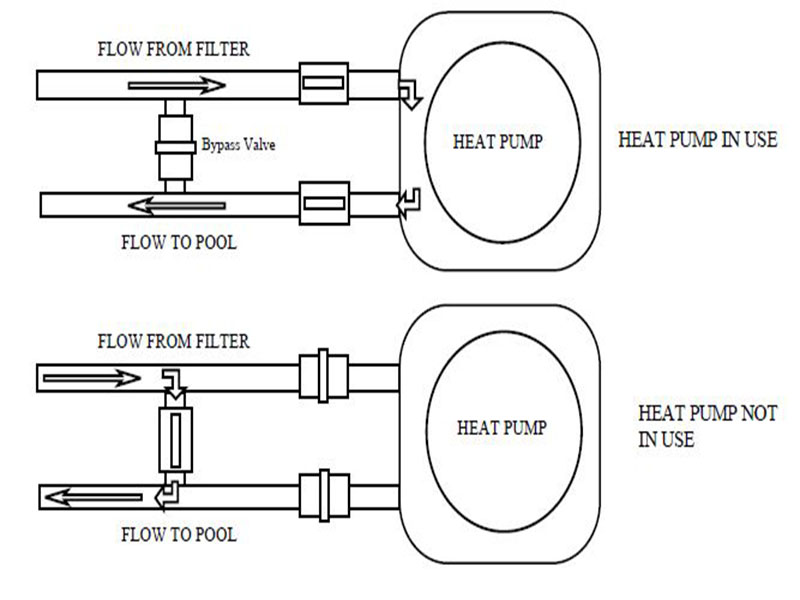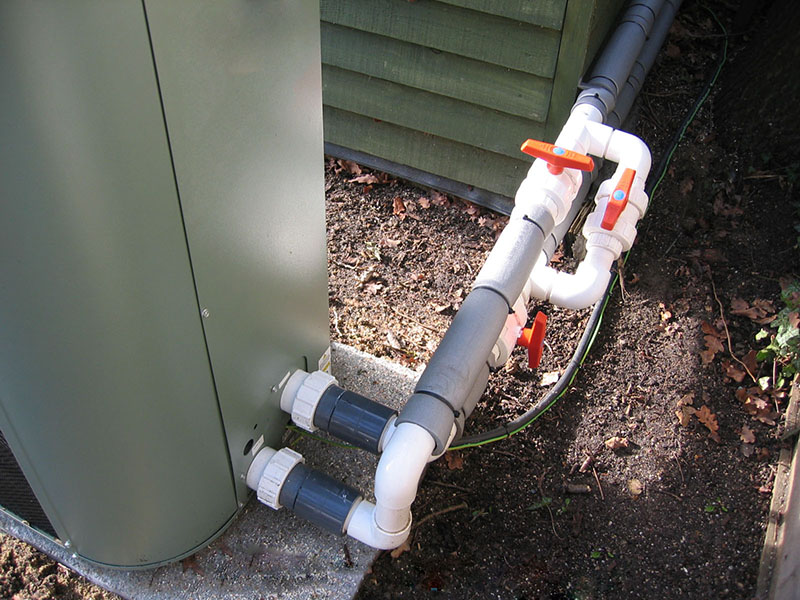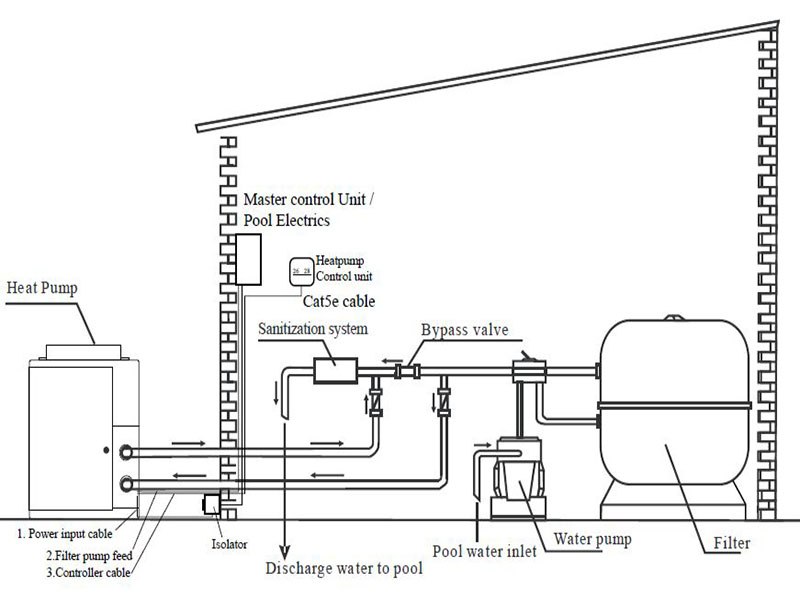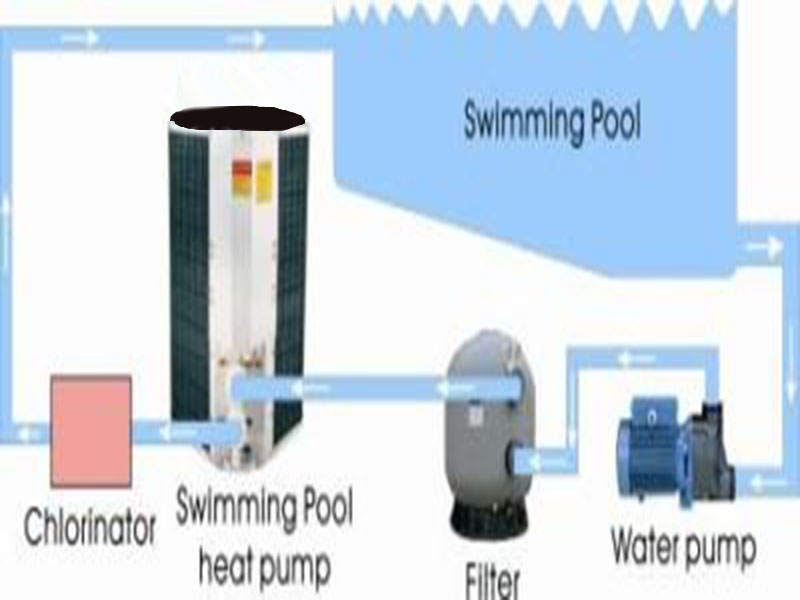5. Plumbing
It is easy to add a heat pump to an existing pool pipework system.
First check to see what size of pipes you have.
In the UK, these are normally 1.5" or 2" pipes. In Europe, 50mm is more common. Check the writing stamped on your existing pipes and elbows to see which size you have. Do not just measure the external diameter of the pipes or fittings as this is often different to the size required and you may accidentally order the wrong size pipe and pipe fittings !
eg 1.5" pool pipe measures approx 1.9" external diameter (the 1.5" refers to the internal diameter of the pipes for imperial sizes and the external diameter for metric sizes)
Once you know the existing pipe size that you have, you will know what size connectors and elbows you will need.
In the UK 1.5" pipes are the most common and 50mm in Europe.
Please see our Accessories section for a catalogue of pipe fittings.
If you have an existing pool heater eg gas or oil boiler, then if it still works ok, we recommend that you leave it in place and put the heat pump in line with the existing boiler.
This will allow you to run both the heat pump and boiler if required for a rapid pool heat up. The old heater can also help to supplement the heat from your heat pump in very cold weather to help extend the swimming season.
Where possible the water should run through the heat pump first and then the existing heater so that the heat pump does most of the heating work. The thermostat on the existing heater (eg gas boiler) can be set lower than the heat pump so that the existing heater will only operate if required.
There are only two pipes to the heat pump - a "flow" and a "return" pipe.
We recommend that you install a "bypass" arrangement with your heat pump
The bypass is a series of 3-valves. These allow you to isolate the heat pump to prevent water flowing through it.
A bypass can also allow the water flow rate to be adjusted to achieve the optimum performance for the heat pump. We are happy to advise on how to adjust the flow rate accordingly depending on the make and model of heat pump used.
Generally, you should aim for a difference between water in and water out temperatures of around 1-2 degrees
This is required in winter when you need to drain all water from the heat pump to prevent damage by freezing, however you may have a frost stat on your pool pump and may wish to continue to circulate the water round your pool pipes.
The bypass setup also allows you to adjust the water flow rate passing though our heat pump. By slghtly opening the bypass valve, you can reduce the water flow through the heat pump.


You must not allow water to freeze inside the heat pump during winter as this can crack the heat exchanger and frost/freezing damage is generally not covered by the manufacturer's warranty. We sell a range of winter covers for pool heat pumps to protect your unit - see our Accessories section
The pipes to and from the heat pump can be insulated to help reduce heat loss.
The heat pump is normally installed as the last item in the water flow before the water returns to the pool, ie after the filter.
The only exception to this is if you have a chlorination unit in which case this should be the last item before the water returns to the pool so that concentrated chlorine does not go through the heat pump as this could cause premature corrosion to the heat exchanger.
The heat pump can be installed alongside any existing heater that you have (eg gas heater). This allows you to use the gas heater as well as the heat pump if required either to rapidly heat up the pool or if the air temperature is too cold to run the heat pump efficiently eg at the and of the swimming season.
Try to have the water going through the heat pump first and then the gas/oil heater so that the heat pump does most of the heating work and the existing boiler only needs to "top-up" the temperature.


Remark:
If you‘re interesting in swimming pool heat pump products,please feel free to contact OSB heat pump.
Some of the articles are taken from the Internet. If there is any infringement, please contact us to delete it.

